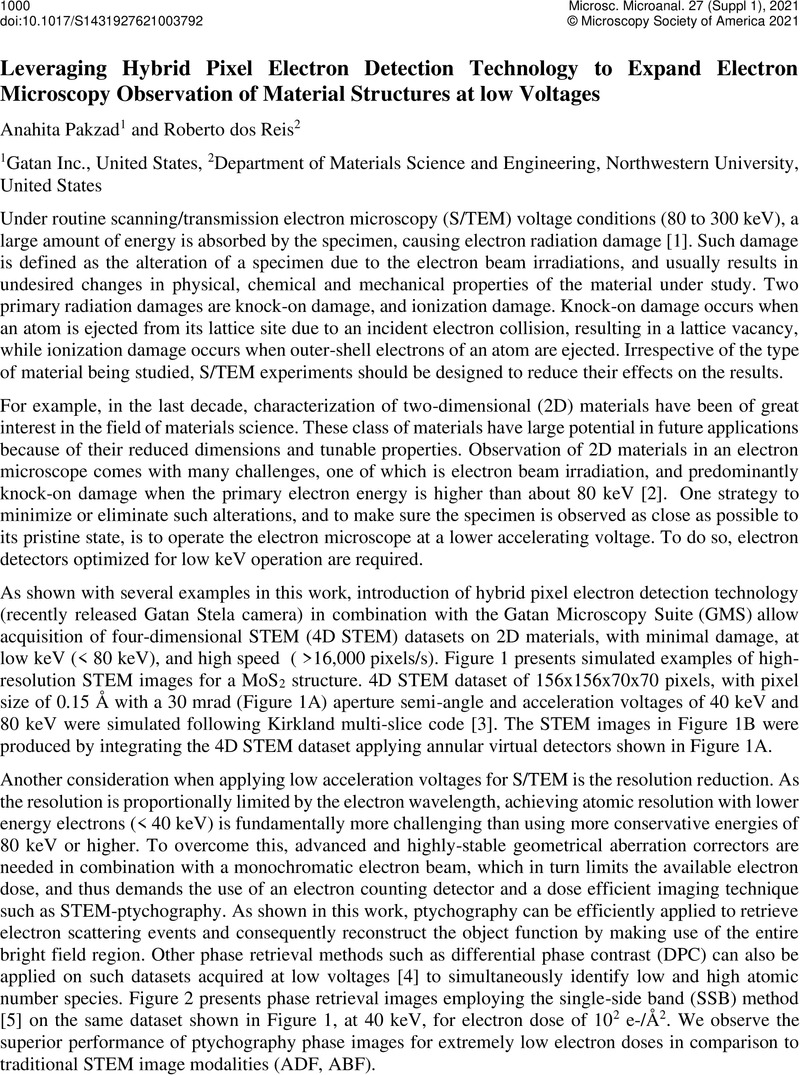No CrossRef data available.
Article contents
Leveraging Hybrid Pixel Electron Detection Technology to Expand Electron Microscopy Observation of Material Structures at low Voltages
Published online by Cambridge University Press: 30 July 2021
Abstract
An abstract is not available for this content so a preview has been provided. As you have access to this content, a full PDF is available via the ‘Save PDF’ action button.

- Type
- Diffraction Imaging Across Disciplines
- Information
- Copyright
- Copyright © The Author(s), 2021. Published by Cambridge University Press on behalf of the Microscopy Society of America
References
Egerton, R. F. Control of Radiation Damage in the TEM. Ultramicroscopy 127 (2013): 100.CrossRefGoogle ScholarPubMed
Komsa, H.-P., et al. Two-Dimensional Transition Metal Dichalcogenides under Electron Irradiation: Defect Production and Doping. Phys. Rev. Lett. 109 (3) (2021): 035503.Google Scholar
Kirkland, E.J. Advanced Computing in Electron Microscopy (p. 250). New York: Plenum Press (1998)CrossRefGoogle Scholar
Wen, Y., et al. Simultaneous Identification of Low and High Atomic Number Atoms in Monolayer 2D Materials Using 4D Scanning Transmission Electron Microscopy. Nano letters 19, no. 9 (2019): 6482.CrossRefGoogle Scholar
Pennycook, T. J., et al. Efficient Phase Contrast Imaging in STEM Using a Pixelated Detector. Part 1: Experimental Demonstration at Atomic Resolution. Ultramicroscopy 151 (2015): 160.CrossRefGoogle ScholarPubMed
RdR acknowledges the support of the EPIC facility of Northwestern University's NUANCE Center, which has received support from the SHyNE Resource (NSF ECCS-2025633), the IIN, and Northwestern's MRSEC program (NSF DMR-1720139). This research was supported in part through the computational resources and staff contributions provided for the Quest high performance computing facility at Northwestern University which is jointly supported by the Office of the Provost, the Office for Research, and Northwestern University Information Technology.Google Scholar




